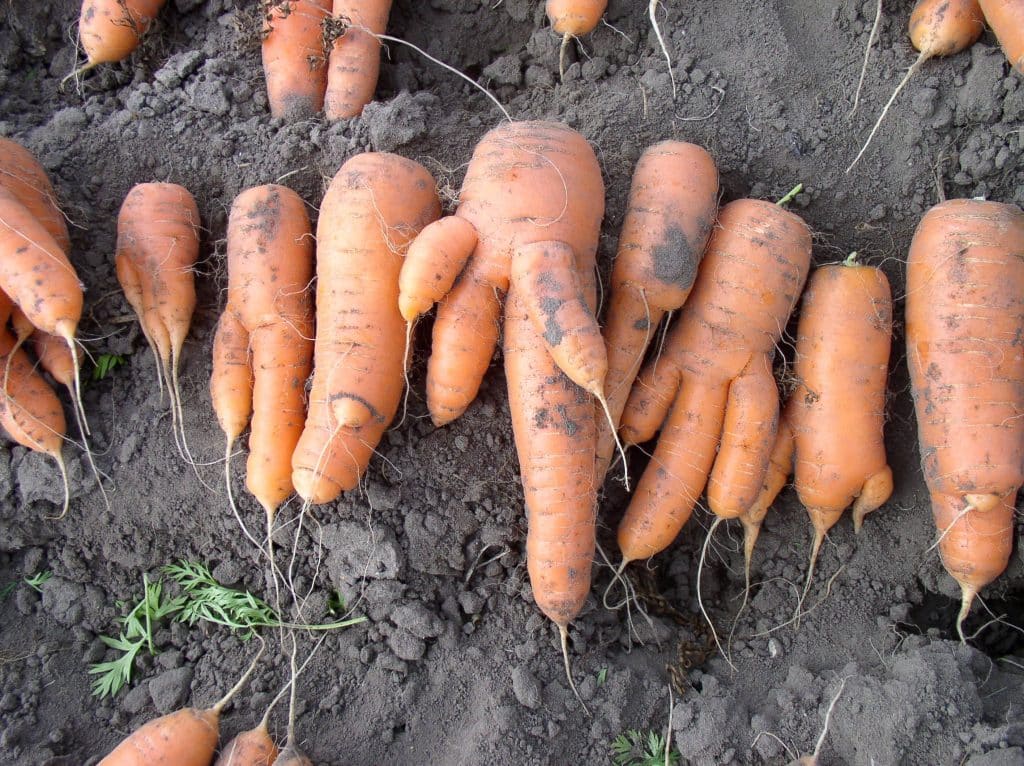Innovative work is underway – The Vegetable Yearbook 2024
Robotics and Artificial Intelligence (Al) are becoming key in lots of different areas of the agricultural industry, including vegetable farming ...
Robotics and Artificial Intelligence (Al) are becoming key in lots of different areas of the agricultural industry, including vegetable farming and their use will undoubtedly become more mainstream as growers address input costs and difficulties in the labour market. Heather Briggs speaks to Freshgro CEO Martin Evans, who is also a board member of Stockbridge Technology Centre (STC) and Peter Waldock, Hutchinson’s technical support for vegetables.
There are some crops where market trends may even speed up adoption of innovations, says Martin, adding that consumer preference for tomatoes on the vine as a premium product may even make for easier mechanical harvesting. “Work currently being done at STC is exploring how drones can identify and remember where the ripe tomatoes are and then rather than a robot handling the delicate tomato, it simply picks the vine,” he says.
In other areas, acceptance may not be so easy. The UK leek market currently demands a base-plate with 5mm leaf to stop the leeks telescoping, which entails human intervention. “When harvested mechanically, this is not possible, but the lack of a base-plate does not really affect quality and in mainland Europe the base-plate is not kept. If, therefore, British supermarkets accept this, more growers are likely to invest in mechanics as it will reduce their labour costs.”
Another important area of change is in grading and pack-houses, partly because of labour costs, continues Martin. “When produce goes over the grader, the necessary quality control measures can result in wide variations on how much of the crop is discarded from one minute to another,” he explains. “As such you always need to have sufficient people to hand just in case reject numbers surge. Optical graders will allow such tasks by a much smaller work force, helping us to keep costs down and adapt to the reduced access to labour.”
Robotics and Al may soon change the way root crops are harvested in the field too, reflects Martin.
“By mapping carrot fields after planting, we will be able to know the exact depth of the crop to lift, reducing damage to the soil and making for more sustainable working practices. We need to do more than just keeping up with progress in robotics and Al we need to be involved in creating it so it works for us.”
Peter observes that most farms are looking at some level of automation due to concerns around the cost and availability of labour. Brassica, allium and field salad crop growers are increasingly turning to mechanical means of weeding. Methods such as between row cultivation, tine weeders, rotary hoes, row crop cultivators, robotic weeders and flame weeders are being developed to fit with the crop architecture and productions systems. However, he notes that the capital expenditure required is still a barrier to entry, especially where grants are not available.
Nevertheless, there have also been important developments in spot spraying and laser weeding technology, which reduce the use of chemical inputs and over the long term, will result in reduced input costs and a lower environmental footprint.
Peter says: “We are also seeing more and more interest and investment in inter row sprayers within crop production to selectively apply herbicide.”
Automating harvesting is more challenging than weeding, however, particularly for the fresh market cauliflower, broccoli and cabbage, he notes. “Mechanical harvesters do not have the capability yet to entice large numbers of growers to adopt them as the systems available are still under development, but technology companies are working towards commercialising machines such as selective broccoli harvesters.”
There are further challenges, as plant architecture is important to building robotic harvesting capability and Peter goes on to explain that the crop needs to be presented in such a way as to allow the robot to find and cut the plant at the right position. In response, seed breeders are developing varieties with traits that will make them suitable for machine harvesting.
Other innovative work is underway to help growers address some of the technical challenges of using robotics, such as a UKRI supported project looking at robotic courgette harvesting.
Peter adds that there is also some interest in asparagus harvesting, although at present this is mainly in the US. “Asparagus is a short season crop in the UK, with just a six to eight week season, making these innovations cost effective is more challenging, because of the high capital expenditure and slow speed of harvest, even though they can potentially operate 24 hours a day.”
Another aspect that may be influencing the uptake is grower concerns that, while the technologies are being developed, investing too early may not give a true return on investment as the systems are still being developed and many have teething issues or operating inefficiencies and they are still being re-engineered.
In addition, there may be uncertainties about the long-term stability of some of the technology companies as some have ceased trading when the investment money has run out or projects have then not continued after the initial grant seeding has been spent, he reports.
Peter goes on to note that the Glasshouse sector is currently further ahead with the development of robotic technology as robots have been ‘happier’ working ina protected environment and can also use glasshouse features already present, such as the heating pipe rail systems.
Moreover, in the case of strawberries, the fruit presentation is easier for the robot to find as the crop both has a good colour contrast to the environment around it and is also presented away from the plant due to the way the fruit is grown on the hanging trough systems.
“There are different challenges when you are using automated machinery in the field which still need addressing, and the sector needs support to work through them.”
